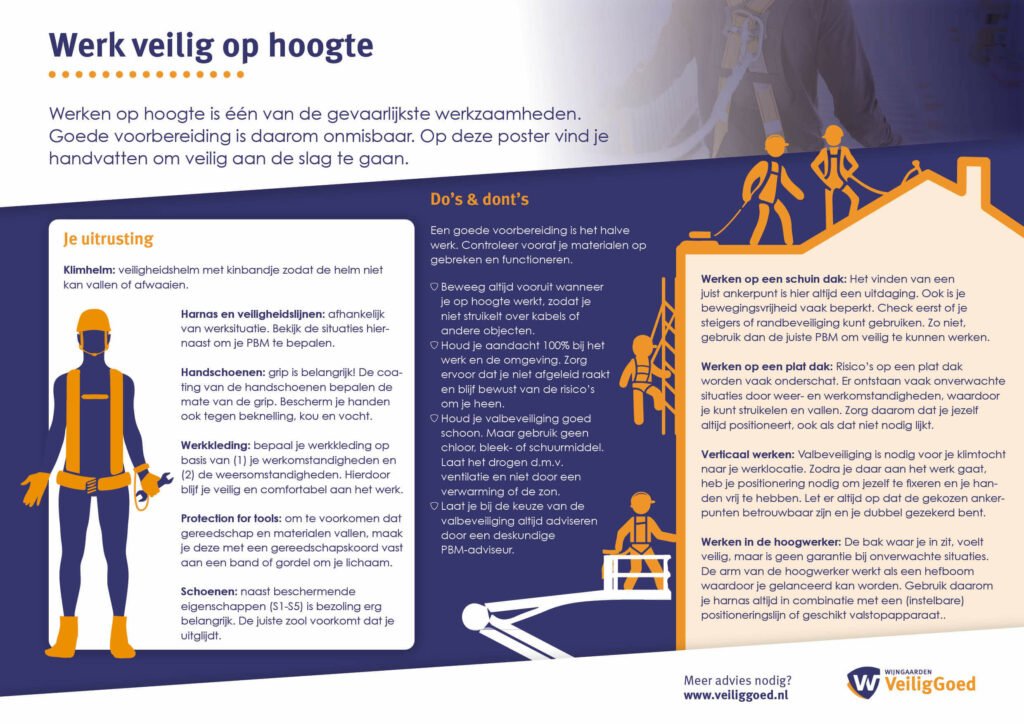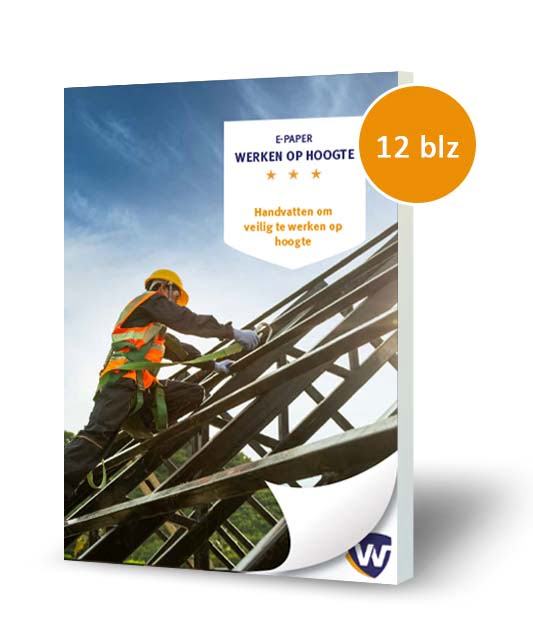
Free poster
Working safely at height
At which mail address would you like to receive the E-paper?
"*" indicates required fields
Most fatal occupational accidents are caused by working at height. Despite the attention already paid to this issue, preventing such accidents is proving challenging. In addition, many accidents are also related to falling objects.
The practical situations during which working at height takes place, are quite diverse. Many of these activities occur in construction and during installation and maintenance activities. This type of work requires a lot of concentration. The hazard here, is that people can only concentrate on one thing; either their work or their safety. When taking measures during the work activities, it turns out that employees do not always make the safest choices. Therefore, it is important to have as many preventive measures taken as possible.
In addition to the primary steps in the AH-strategy, PPE usually remains required. Relevant products that we can provide, are:
We notice that employees only become aware of the risks of height differences when they discuss them together. The dialogue during courses and training will help to achieve this. Particularly, when we simulate the work situation, employees get more insight in the consequences of working at height.
Protection must be coordinated with the employee and his work conditions. These may vary in length, frequency, type of work and comfort. It is recommendable to involve the employees when selecting the protective equipment.
By letting the employees testing the options themselves, you will know which PPE offers the best protection. Take their opinion seriously, so they become more motivated to wear their PPE.
Our PPE advisers have advised in many diverse work environments. They are familiar with applicable laws and regulations. By going through the risks of falls from height with you, we can help you determine the required PPE.
Knowledge and support are essential to try and solve this problem. That is why our PPE-consultants also offer SHE meetings and training!
The law prescribes that work activities at height can only be performed from a safe scaffold, platform, or work floor. If this is not possible, then other effective measures must be taken to prevent falling hazard. If, in practice, this also turns out to be impossible, then suitable work equipment must be chosen to perform the work as safely as possible. The RI&E or specific TRA must decide which measure or which work equipment is most suitable for a certain situation.
Various legal regulations and guidelines have been drawn up for preventing falls from height. Here, we refer to articles in the Working Conditions Decree:
Furthermore, measures were prescribed in the H&S catalogues, for branches that frequently deal with working at height, and were put in order of preference. and put in order of preference.
Our advisors are happy to help you or make an appointment if you wish.
Phone: +31 184 434 455
Mail: info@veiliggoed.nl
By use of our scan, we inventory risks at function level. By means of an advisory report and a PPE-matrix, you will get an overview of the required protection measures. More information about the PPE-scan.
Trapezium 400
3364 DL Sliedrecht

"*" indicates required fields

"*" indicates required fields